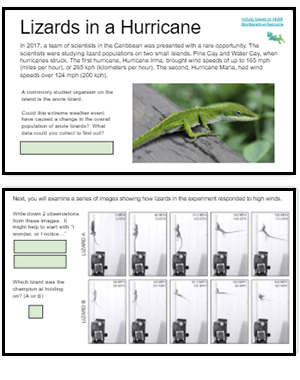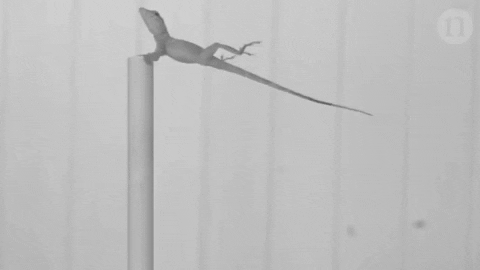
Activity is based on the phenomena from Biointeractive – lizards in a hurricane. I adapted this version for students to complete on their own or in remote learning.
The slides start with an opening statement describing the anoles in the Caribbean and the hurricanes that devastated the islands in 2017. A central question revolves around how hurricanes would change lizards on the island.
Embedded in the slides is a gif from the Nature video that describes the study on lizards and hurricanes. Students can watch the whole video at the end of the lesson, but I didn’t want to give too much away at the beginning.
To start, they only watch a clip showing a lizard trying to hang on to a pole while being blasted with a leaf blower. (Students usually find this pretty amusing.)

Student Driven Inquiry
First, students examine still photos of lizards hanging on during high winds. Then, they make observations about how the lizards hold on. This leads them to generate questions about why some lizards might be better grippers than others.
The next slides examine actual data from a scientific study on lizards and their toe pads. I set up these slides to use an I2 strategy. Students annotate with what they see, what it means, and then create a caption.
Students should come to the conclusion that after the hurricanes, the average size of lizard toe pads increased. Lizards use toe pads to grip surfaces.
A final slide asks students to restate the question being asked by the research and to summarize the data and conclusions. This assignment could be completed as homework, but I plan to use it as a class discussion activity where we complete the slides together. My students are both in person and remote, so that makes things a little more challenging. I do not have an answer key, mainly because most of the questions are subjective or meant to prompt discussion.
You can also assign students the paper version which can be printed and shared with the class. Students can use this to work in small groups or with guided instruction.

